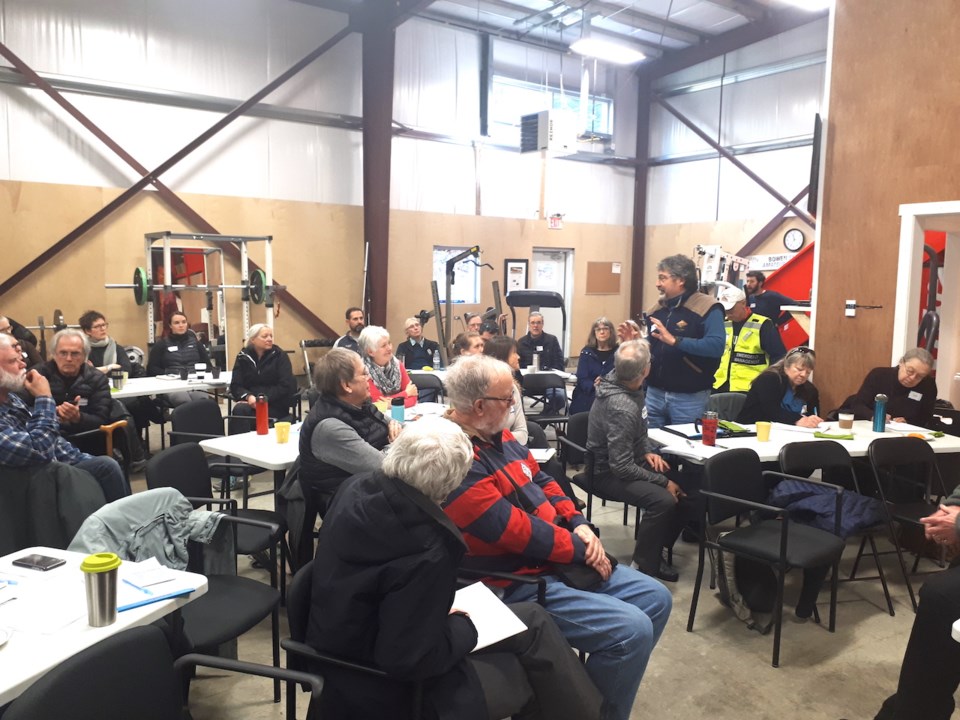It was coincidentally as the potential of a COVID-19 pandemic looms that more than 50 people gathered at the satellite firehall Feb. 29 for a Neighbourhood Emergency Response Program (NERP) general information session.
It was first time that such a swath of volunteers of the recently resuscitated NERP, along with the acting fire chief, ambulance service, emergency support services and Canadian Disaster Animal Rescue Team had met in such a fashion. Attendees not only got thorough overview of the program and its history but also an introduction to the Bowen Island Evacuation Plan (which is still in the draft stage).
NERP coordinator Edward Wachtman was buoyed by the attendance and response. “This meeting is the beginning of real of things really beginning to happen,” he said.
NERP dates back to the early ‘90s and has had its ebbs and flows (more ebbing than flowing in recent years). But Wachtman, under the guidance of BIM’s emergency program coordinator Jennifer McGowan, has been steadily rebuilding the program since last summer.
“There are three levels to a NERP role, preparation, response and recovery,” said Wachtman. “And we’ve decided to focus heavily on preparation because…there’s the most uniformity around it.
“The premise being, the better prepared you are, the better your response to a situation will be.”
One of the crucial roles of a NERP is to know the people of a given neighbourhood and to know what assistance people may need and what skills or resources they might be able to offer in an emergency. How this happens varies by neighbourhood. In the Mt. Gardner area, NERPs are already going door to door, meeting people and sharing information packets, but block parties, potlucks and other means of building connections are other ways folks can get to know their neighbours.
Now, though there are more than 50 NERPs across the island, some neighbourhoods have a greater concentration of volunteers than others. Watchman is particularly looking for more NERPs in the King Edward Bay, Bowen Bay, Tunstall Bay and east slope of Cates Hill regions.
While the list of names of NERPs is private, if someone wants to know who their NERP is, he said to call the muni or contact him ([email protected]).
But NERPs are not first responders. In the case of an evacuation, they’d be evacuees. They are sources of information and information dissemination (Wachtman noted that they could also be used to head off the rumour mill in emergencies).
“We had people we all repeated it together,” said Wachtman. “Safety is the number one priority when conducting all activities do not take any hazardous risk could lead to injury or death.”
However, in the case of a widespread emergency like an earthquake, emergency response will be slow and islanders will need to look after one another. For Wachtman and the NERPs, all they and we can do for now is prepare.
At the end of Saturday’s meeting, each NERP got a brand new fashion accessory––a bright yellow vest with NERP emblazoned across the back.
“This is a formal organization now, this [vest] is in case of an emergency. This shows people that you’re where you’re supposed to be,” said Wachtman.
For more information about NERP, the municipal emergency program, BIM’s emergency guide and more, visit bowenislandmunicipality.ca/emergency-program.



